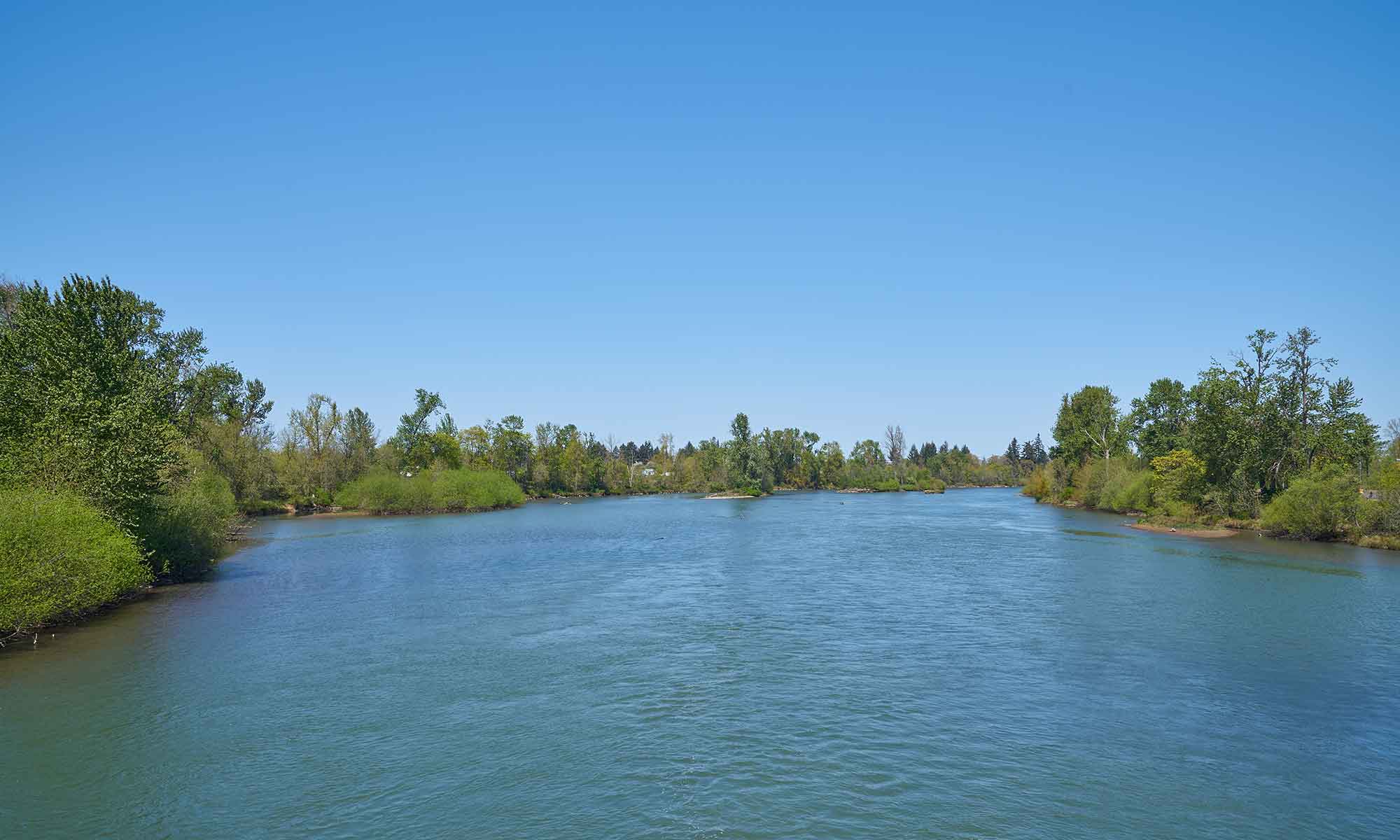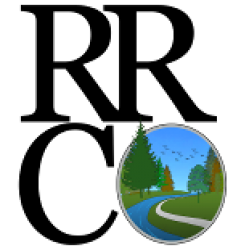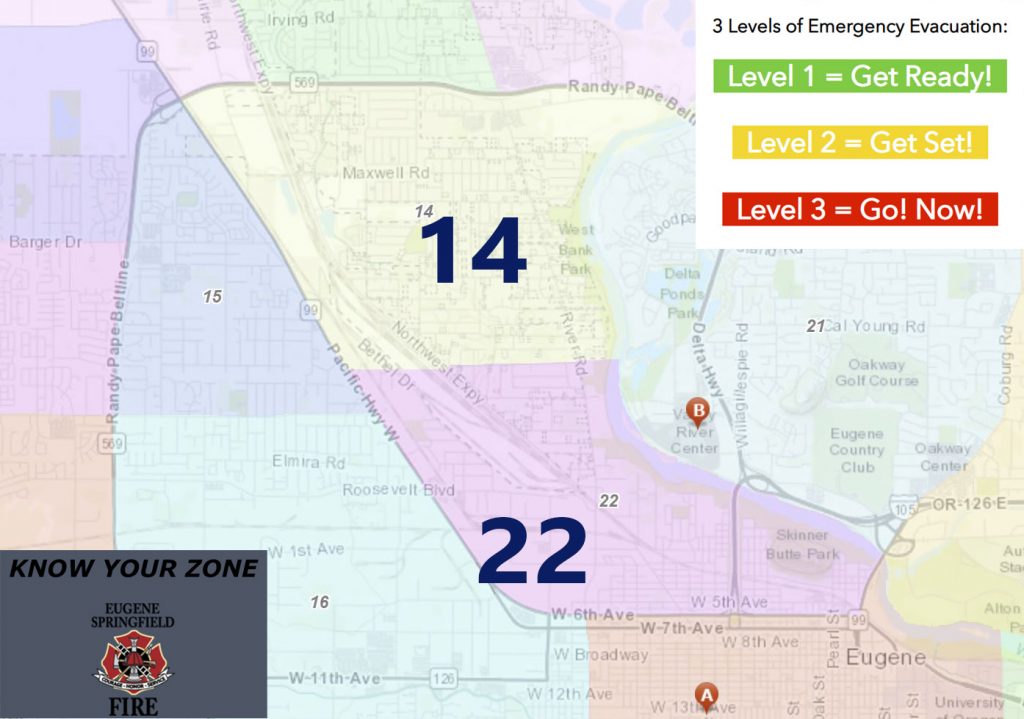Neighbors helping neighbors to grow an informed, prepared, and resilient community.
You are the Help…Until Help Arrives!!
During an emergency or natural disaster, first responders may not be able to assist our neighborhood right away. You and your neighbors may become your own first responders.
Do you have the supplies and skills to evacuate or shelter in place in your home?
Do you know your nearest neighbors?
Are there steps you can take now to reduce your risks?
Quick Links:
Meetings and Presentations
Contact Us
Personal Preparedness
Evacuation Zones
Fire Risk and Defensible Space
Hazardous Chemical Risk in River Road Neighborhood
Flooding Risk in River Road Neighborhood
Power Outages and Extreme Heat
Map Your Neighborhood
Mental Wellness
Resources
What is the RRCO Emergency Preparedness Team?
We are neighbors of all skill levels who are preparing ourselves, families, homes, and community for unexpected events.
The River Road Emergency Preparedness Team partners with our neighbors in the Active Bethel Community and Santa Clara Community Organization to collaborate in the Ready NW Eugene preparedness efforts. We welcome all neighbors to join us in these important conversations!
Goals
- Increasing personal preparedness by sharing education and trainings with each other.
- Identifying and documenting hazards, threats, and risks for the River Road Neighborhood.
- Planning and practicing with ongoing readiness exercises.
- Discussing and implementing prevention, mitigation, and recovery strategies.
- Developing a neighborhood organizational structure and communications network.
Meetings and Presentations
First Tuesday of each Month
via Zoom
6:30 -7:30 pm
Visit the RRCO Events Calendar for the login details.
Our past meetings and presentations have been recorded and can be replayed at our
Ready NW Eugene YouTube Channel.
Contact Us to Learn More
RRCO Contacts: Jacque Wurster & Charlsey Cartwright
Email: ReadyNWEugene@gmail.com
Personal Preparedness
Every neighbor should proactively prepare to be self-sufficient for at least two weeks during a disaster.
First responders may not be able to reach everyone impacted within hours or even days after a disaster. Being 2 Weeks Ready means having a plan and enough supplies for you and your household to survive on your own for a full two weeks should a disaster occur.
Be informed about disaster risks.
In Oregon, winter storms, floods, heat waves, and earthquakes threaten residents. Monitor all types of media for updates from local authorities.
Build an Emergency Kit.
A disaster can happen anywhere you live and work. Create repeated instances of emergency supplies by having a bag for your car, supplies at work, and an even larger stock of supplies at home. https://www.redcross.org/get-help/how-to-prepare-for-emergencies/survival-kit-supplies.html
Make an Emergency Plan.
Talk with your family and friends about what you’ll do if an emergency happens, including if you’re not together when it occurs. Discuss how you’ll contact each other, where you’ll meet, and what you’ll do in different situations.
Be 2 Weeks Ready!
You’re more prepared than you think. Being prepared to be self-sufficient for two weeks is an important and achievable goal. Being prepared is not just having two weeks of food and water, but thinking about the many things you already do to make you better able to bounce back after a disaster.
You can get there over time; you don’t have to get there today. Start small and work toward the two-week goal. Pick up a couple items every payday and check out garage sales and thrift stores for tools and gear. Check the garage, shed, storage unit and junk drawer for emergency kit items before adding to your shopping list. You probably have many of the things already, such as flash lights and leather gloves.
Learn more at https://www.oregon.gov/oem/hazardsprep/Pages/2-Weeks-Ready.aspx.
Evacuation Zones
Eugene Springfield Fire has developed Evacuation Zones to be used in case of an emergency (i.e. severe weather event, wildfire, flooding, etc.) requiring evacuation. The Evacuations Zones allow community members, emergency services, emergency managers, and 9-1-1 to be on the same page when initiating a mass evacuation due to an emergency.
The River Road neighborhood primarily sits within Zones 14 and 22.
Visit https://www.eugene-or.gov/4732/Emergency-Evacuation-Zones for more information.
Lane County, Oregon – Evacuation Levels and Evacuation Checklist
Level 1 = Get Ready!
Level 2 = Get Set!
Level 3 = Go! Now!
- Practice your evacuation plan at home. Children will often know exactly what to do during an emergency in a school setting because they practice fire and weather drills regularly. Many times, children and adults do not know what do during an emergency at home because we don’t practice.
- Talk to your family ahead of time about a meeting place if you need to evacuate your home, for any reason.
- Make a list of items you need to take with ahead of time so you are not identifying all of these items in the midst of the emergency.
- Remember that traffic and emergency conditions can change rapidly.
- Become familiar with your neighborhood and several different accesses out, emergency crews may be trying to come IN to the neighborhood.
- You do not have to wait for a Level 3 – Go Now to get out of your home. Levels could change very quickly and unexpectedly. There is nothing preventing you from leaving as soon as you feel a threat.
- PRACTICE, PRACTICE, PRACTICE!
Fire Risk in the River Road Neighborhood
“Everybody’s defensible space project, just like their evacuations plans, will look different from your neighbors. The plan of action will be specific to your home. Providing space and barriers that remove the little opportunities for fire to occur, in and close to your home, should provide an immense amount of protection. Also consider that defensible space doesn’t necessarily mean removal of all trees and plants from our beautiful neighborhood – a healthy, green environment is very fire resistant. Defensible space is not about removal of all fuels, it’s about smart management of the fuels. The secret is to not allow the fire to start, generate heat, grow, and consume more fuel.”
-Merrill Harrison, Assistant Fire Marshal at Eugene Springfield Fire
Even in the lower land areas of our town, such as Northwest Eugene, we face a risk of wildfire or residential fires. The flammability of our homes and the highly flammable plants and trees around us put our neighborhood at risk. Embers and burning material can travel many miles in high winds, and even though it feels like this is a suburban area that isn’t as much at risk, we have witnessed increasing amounts of urban and suburban fires in recent years. Below are several steps that we can take to eliminate small opportunities for the fire to ignite and continue gaining strength.
Creating Defensible Space Around Your Home
- Remove combustible materials on roofs and gutters like leaves and pine needles, where burning embers can land.
- Trim tree branches that overhang or touch the roof, gutters, or chimney, to at least 6 feet away.
- Remove combustible materials from the ground. Check for leaf piles along the foundation of the home.
- Prune and remove dead and dying branches from any vegetation.
- Thin and prune bushes and trees a few feet up from the ground to prevent fire from climbing up the plant from the ground (also called ladder fuels).
- Place wood piles at least 30 feet from the home and store in a vegetation free zone, such as on a graveled area.
- Change vent screens on the crawl space and attic entries from 1/4″ to 1/8″ screens, to reduce the chances of burning embers from entering your home.
- Review the Highly Flammable Plant and Tree List (such as Arbor Vitae!), characterized by low moisture, dry limbs and needles, and abundant oils. These plants and trees are not recommended to be used within 30 ft. of any structures, fences, or decks.
- There are NO fire-proof plants, but some are more fire resistant than others with characteristics such as:
- Easy to maintain and prune
- Have high moisture content, such as succulents
- Have stems or leaves that are not resinous, oily, or waxy
- Have less accumulated debris and fewer dead branches
- Are drought resistant, requiring less irrigation
- Have an open, loose branching pattern
- Burn less intensely when ignited
Oregon State University Fire-Resistant Plants for Home Landscapes
https://catalog.extension.oregonstate.edu/pnw590 (click the black PDF button to download the PDF for free)
Check out the full recording of our discussion with Merrill Harrison at Eugene Springfield Fire – https://www.youtube.com/watch?v=ZTt7t9bTZg0
Hazardous Chemical Risk in River Road Neighborhood
Millions of hazardous chemicals pass through and are stored in the River Road neighborhood via the Railway along Northwest Expressway and pose a real threat to our homes and families. It’s important to understand what the possibilities of accidents are and develop preparation and response plans to those risks.
In February of 2022, we held our first Virtual Evacuation Exercise of a simulated Chlorine Gas leak at a rail yard in Northwest Eugene. We explored how neighbors would be alerted of the incident, if we were prepared to evacuate or shelter in place, and how to consider rapidly changing conditions.
In 2022, Senate Bill 1567 gave the Oregon Department of Environmental Quality the authority to develop a program that evaluates the vulnerability of fuel tank systems to earthquakes and requires facilities to develop a plan to minimize risk. These rules will apply to facilities managing over two million gallons of fuel in Lane, Multnomah and Columbia counties.
DEQ has established a rules advisory committee that will provide input and suggestions during the development of these new rules. The committee represents a combination of neighborhood, local emergency response, impacted neighborhood and community groups and regulated party perspectives.
Visit https://www.oregon.gov/deq/rulemaking/Pages/seismicstability2023.aspx for more information and public meeting details.
Flooding Risk in River Road Neighborhood
On November 14, 2022, more than 100 persons attended an RRCO zoom meeting to hear an in-formative presentation by the U.S. Army Corps of Engineers (USACE) on Dam Breach Risk and Flood Inundation Mapping for the greater Eugene/Springfield area.
The presentation focused on the dam safety in the Willamette Valley and the potential of flood inundation in the Eugene/Springfield area resulting from a variety of scenarios related to dam operations. The thorough overview of the USACE’s inspection and maintenance protocols was reassuring and informative as was the presentation on the National Inventory of Dams (NID) https://nid.sec.usace.army.mil/#/ where the public can research the condition, maintenance and inundation potential of all of the nearby dams.
A draft Summary that documents the numerous, complex questions and answers covered in the meeting available to review at: https://tinyurl.com/damsummary.
Watch the entire presentation at: https://tinyurl.com/USACEDamPresentation
Power Outages and Extreme Heat
View or download the PDF Presentation about Power Outages, Extreme Heat, and Heat Related Illnesses.
Can we use the water stored in our water heaters in the event of an emergency?
EWEB offers a document that can be printed and kept with your water heater with instructions on how to access and treat the water. Put this document in a gallon size plastic bag and tape it near the water heater so that it is handy during the emergency and does not get wet.
You can find the instructions and more information here – https://www.eweb.org/outages-and-safety/preparing-for-emergencies
Treating Water
A variety of methods are available for treating water. Keep in mind that if the power is out, you may not be able to boil it and will need to use other methods:
The Washington Department of Health has a printable guide for storing and treating water https://doh.wa.gov/sites/default/files/legacy/Documents/Pubs//331-115-PrinterFriendly.pdf
The CDC also has additional information – https://www.cdc.gov/healthywater/emergency/making-water-safe.html
Heat Index Cell Phone App
The OSHA-NIOSH Heat Safety Tool is a useful resource for planning outdoor work activities based on how hot it feels throughout the day. Featuring real-time heat index and hourly forecasts, specific to your location, as well as occupational safety and health recommendations from OSHA and NIOSH.
Download App for iPhone and Androids here – https://www.cdc.gov/niosh/topics/heatstress/heatapp.html
Map Your Neighborhood
In a disaster your quickest source of outside help may be the immediate neighbors living around you.
Preparing and organizing with neighbors is not a one-size-fits-all process. Just as neighbors are all unique in their own way, you may live in a single-family home or farm with neighbors spread out over large yards or acres, in an apartment building with neighbors spread over several floors, or be missing secure housing and spending time in close quarters with neighbors. How you organize may be different depending on your needs and abilities.
* Please consider the local COVID-19 recommendations and guidance when having in person conversations.
Steps to Get Started
- Start talking to your neighbors about their Emergency Preparedness Plans
- Create a contact list indicating number of people in household, who may have special needs (elderly, persons with disabilities, children that might be home, animals)
- Identify skills, equipment, abilities of each neighbor that could be useful for an effective disaster response
- Identify risks within your neighborhood (overhead wires, gas mains, trees, nearby chemicals, etc.)
- Create a neighborhood map showing house numbers, gas and water turn off
- Organize a team to carry out your plan following the disaster
- Choose locations for a safe Gathering Site and Neighborhood Care Center
- Work together as a team to evaluate your neighborhood during the first hour following a disaster and take the necessary actions
9 Steps to take immediately following a disaster to secure your home and neighborhood:
- Take care of yourself, your family, and those in your immediate household first
- Protect our head, feet and hands with protective clothing (kept under your bed with HELP/OK sign)
- Check for injuries and natural gas leaks at your home
- Shut off water at the house main to preserve clean water and avoid outside contamination
- Place HELP/OK sign on front door or window for emergency teams
- Put one of your fire extinguishers on front curb to put out small fires
- Go to the Neighborhood Gathering Site
- Form teams to 1) listen to radio for alerts; 2) check on elderly, disabled, children, animals; 3) check gas and water leaks; 4) check homes with HELP signs or with no sign
- Return to Neighborhood Gathering Site to share response, communicate needs to the city, plan next steps
Map Your Neighborhood Resources
Bainbridge Prepares – Have you mapped your neighborhood yet?
Snohomish County, WA – Map Your Neighborhood
Mental Wellness for Emergency Preparedness
Preparing for emergencies, talking about disasters, thinking about your to-do list, and responding to calls for help can all take a toll on our mental health.
When stress builds up it can cause:
Burnout – feelings of extreme exhaustion and being overwhelmed.
Secondary traumatic stress – stress reactions and symptoms resulting from exposure to another individual’s traumatic experiences, rather than from exposure directly to a traumatic event.
Know that you are not alone in these feelings and your community is here to help.
Here are some options to try when these preparedness topics feel overwhelming:
- Spending time outdoors focusing on the plants and animals that you can see.
- Write down a few notes about what you have accomplished in the last day, week, month, or year.
- Call a friend to ask about their latest activities.
- Go for a walk and count how many right hand turns you make.
- Choose a new recipe or order a new dish that includes vegetables.
- Asking a family member if they need help with a project.
For more information about stress and self-care in the emergency preparedness universe, visit https://emergency.cdc.gov/coping/responders.asp.
Resources
City of Eugene – Evacuation Zones
The River Road Neighborhood falls within Zones 14 and 22.
Lane County, Oregon – Evacuation Levels and Evacuation Checklist
Level 1 = Get Ready!
Level 2 = Get Set!
Level 3 = Go! Now!
Eugene and Lane County Emergency Alert Signup
Sign up to receive public safety alerts and severe weather warnings.
Current Air Quality and Warnings
Current Fire, Weather, and Avalanche Warnings
How to Build an Emergency Kit – ready.gov
FEMA – Shelter In Place Guidance
Red Cross – How to Prepare for Emergencies
Sanitation and Waste Management During Emergencies – Oregon State Extension
EWEB Pledge to Prepare and 12 month Calendar and Shopping List to Build an Emergency Kit
3 Month Calendar and Shopping List to Build a 2 Week Emergency Kit
OPB (Oregon Public Broadcasting) – Unprepared Documentary
City of Eugene Office of Emergency Management
Lane County Office of Emergency Management
State of Oregon Office of Emergency Management
Eugene EmComm – Radio Volunteers in Support of Community Safety


